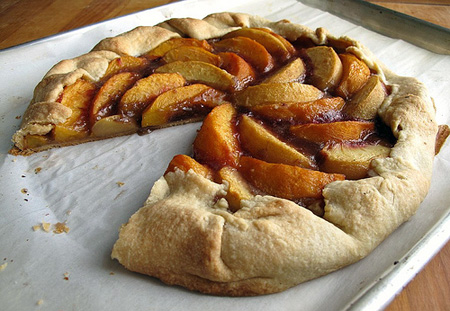 The change in temperature; going from cold to hot to cold again has wreaked havoc on my family and their health. Me included. Last week, there were two mornings that I dropped the kids off at school, came home, and got right back into bed. Slept for hours, with a puppy on my belly. Regardless of feeling totally crappy, there truly is nothing better than getting back under the covers (at 9:00 a.m.) with a cozy, little Lola close by.
The change in temperature; going from cold to hot to cold again has wreaked havoc on my family and their health. Me included. Last week, there were two mornings that I dropped the kids off at school, came home, and got right back into bed. Slept for hours, with a puppy on my belly. Regardless of feeling totally crappy, there truly is nothing better than getting back under the covers (at 9:00 a.m.) with a cozy, little Lola close by.
Thank goodness for my freezer. Meal planning, prepping, and stocking the freezer pays off. In my opinion, it’s a wonderful feeling, opening the freezer door and seeing laborious hours spent in the kitchen, put to good use.
Before crawling back into bed, I went to my extra freezer and took out three quarts of chicken stock. I also grabbed 2 organic chicken breasts and set both on a rimmed baking sheet to thaw. After several hours of napping, I had just enough energy to roast the chicken, cut the veggies, and prep the matzoh balls.
For my family, matzo ball soup is one of our favorite comfort meals. It’s a one pot meal that covers all the food groups; protein, grains, vegetables, and fat. Plus, this meal leaves plenty of room for dessert.

 It's well known that paprika is the famous spice of Hungary. What I think most people don't realize is that the red powder is made from ripened peppers also called paprika. The word paprika means pepper in Hungarian, and I don't mean peppercorns, but rather the fruit or vegetable, depending on how you look at it. Hungarian sweet peppers are typically pale yellow to pale green in color when they are fresh. They can be eaten raw or cooked into many recipes. But when they ripen to bright red, they are dried and ground into the fine red powder known as paprika or what I like to call Hungarian gold.
It's well known that paprika is the famous spice of Hungary. What I think most people don't realize is that the red powder is made from ripened peppers also called paprika. The word paprika means pepper in Hungarian, and I don't mean peppercorns, but rather the fruit or vegetable, depending on how you look at it. Hungarian sweet peppers are typically pale yellow to pale green in color when they are fresh. They can be eaten raw or cooked into many recipes. But when they ripen to bright red, they are dried and ground into the fine red powder known as paprika or what I like to call Hungarian gold. I can never tire of a rustic dessert, especially one made with fresh, perfectly ripe peaches. Fruits like these when at their peak always make the difference, turning a ho-hum dessert into a spectacular one. I'd like to think that peach desserts are an American specialty, particularly a Southern one. There is the traditional peach cobbler, peach crisp, and peach crumble. There are also the peach pie and tart. But when simply baked on a pan with the edges of the dough turned over, you have what the French call a galette and the Italians a crostata. An extra crispy crust sets the galette or crostata apart from pies and tarts.
I can never tire of a rustic dessert, especially one made with fresh, perfectly ripe peaches. Fruits like these when at their peak always make the difference, turning a ho-hum dessert into a spectacular one. I'd like to think that peach desserts are an American specialty, particularly a Southern one. There is the traditional peach cobbler, peach crisp, and peach crumble. There are also the peach pie and tart. But when simply baked on a pan with the edges of the dough turned over, you have what the French call a galette and the Italians a crostata. An extra crispy crust sets the galette or crostata apart from pies and tarts. My
friend Chris was recently visiting LA and I decided to surprise him
with one of his favorites - Banana Cake. He lives in NYC and loves to
stop by Billy’s Bakery and pick up a whole Banana cake to take home.
They have great homemade baked goods and it’s definitely worth stopping
by when you’re in the city. Their version of Banana Cake is quite dense
with a sugary sweet frosting but I prefer a lighter more tender cake
with smooth silky cream cheese frosting.
My
friend Chris was recently visiting LA and I decided to surprise him
with one of his favorites - Banana Cake. He lives in NYC and loves to
stop by Billy’s Bakery and pick up a whole Banana cake to take home.
They have great homemade baked goods and it’s definitely worth stopping
by when you’re in the city. Their version of Banana Cake is quite dense
with a sugary sweet frosting but I prefer a lighter more tender cake
with smooth silky cream cheese frosting.
 Tuscans have a very simple and rustic cuisine, characterized by hearty stews, soups, baked goods, and beans. Tuscan bread is the one that's famous for being made without salt. Outside of Tuscany, many people are unfamiliar with the traditional foods, namely sweets. But there's one dessert that's particularly popular around this time of year in Tuscany.
Tuscans have a very simple and rustic cuisine, characterized by hearty stews, soups, baked goods, and beans. Tuscan bread is the one that's famous for being made without salt. Outside of Tuscany, many people are unfamiliar with the traditional foods, namely sweets. But there's one dessert that's particularly popular around this time of year in Tuscany.
